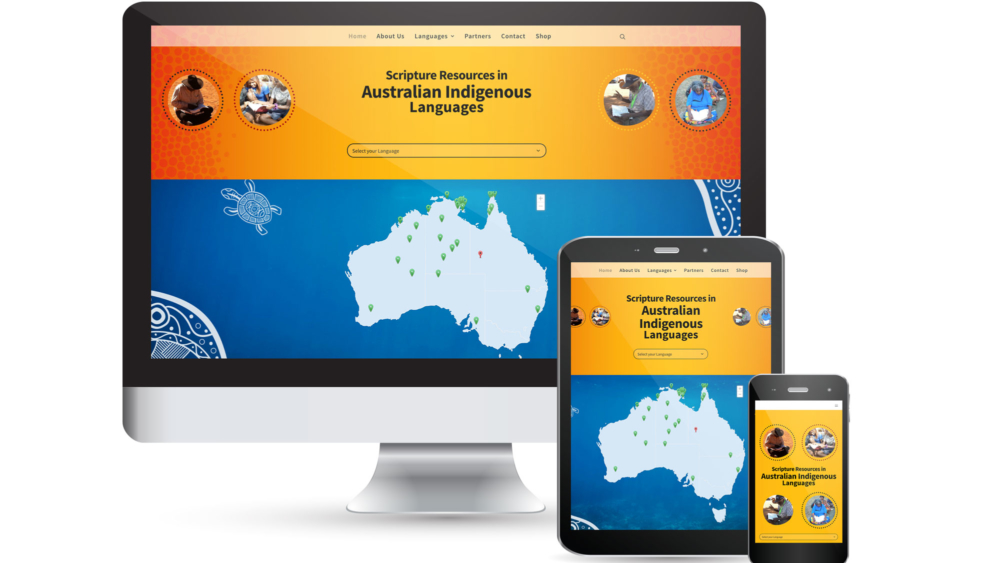New site showcases mass of Bible translation work in Indigenous languages
A new and improved website launched for NAIDOC week is highlighting the extensive Bible translation work in Aboriginal and Torres Strait Islander languages.
The website – aboriginalbibles.org.au – collates the Bible translation work done in 35 Aboriginal and Torres Strait languages, with another 15 still to come. It’s the first time such work has been collated in the one place, with many resources and translations also available online for the first time.
The site, a collaboration between Bible Society Australia, Wycliffe and AuSIL (Australian Society for Indigenous Languages), seeks to bring visibility to the 50 languages that have Bible translations in some form. Many other organisations have contributed to the Bible translation effort over the years. Yet the site also serves as a reminder of the significant loss of language that Australia’s First Nations peoples have experienced.
In some languages, there would be no data at all if it were not for Bible translation.
“Prior to the arrival of European settlement, it is estimated that around 400 Indigenous languages were spoken in Australia. Unfortunately, since that time Australia has suffered the highest rate of language extinction in the world and currently only about 10 per cent of these languages are still being used in daily life,” the website reads.
In some languages, there would be no data at all if it were not for Bible translation, says David Blackman, coordinator of print scripture publications for AuSIL.
“That’s certainly true of the Awabakal language, where the only data researchers had was collected by missionaries in the 1820s and 30s,” Blackman tells Eternity. “Dieri, a language of the far north of South Australia, is another language where the only record, as far as I know, is Scripture.”
“It’s not just to translate the Bible; our job is also to ensure a language is documented.” – David Blackman.
Blackman is also a translator of the Alyawarr language of Central Australia. He’s been working on Bible translations in the language since 1992, and has assisted in the publication of 70 per cent of the New Testament and 10 per cent of the Old Testament – all of which can now be accessed on the aboriginalbibles.org.au site.
“When translation takes place, it shows that someone cares about the language. It’s not just to translate the Bible; our job is also to ensure a language is documented,” says Blackman.
“When we produce a dictionary or parts of the Bible in a language, it gives the language status. And it gives the people who speak the language a tangible reason to be proud of their language.”
To date, only one Indigenous language has a full Bible completed. Kriol is spoken by 30,000 people across the top of Australia. The completed Bible was published in 2007. A revised edition was released in May this year.

Blackman told Eternity that the website, which re-launched this week, has already been getting use.
“Just yesterday the chaplain at Alice Springs Hospital asked me how to get the words of the Lord’s Prayer in as many local languages as possible to use in her work. I was able to direct her to the website to easily access the passage from [the book of] Luke,” Blackman said.
“How much we have done. But how much have we left to do!” – Yurranydjil Dhurrkay
It is hoped that Aboriginal and Torres Strait Islander people will begin to access the website as more and more people learn to read the language of their people. Smartphone apps that house Bible translations in local languages have already received good take-up in local Aboriginal communities in central Australia, and Blackman believes the website will help promote the apps and other materials.
“[The site] is really another way to raise awareness of the work that’s being done in all of these languages.”
But there is always more work to do. Eternity spoke to Aboriginal translator Yurranydjil Dhurrkay in Galiwin’ku, North East Arnhem Land, last month as part of celebrations of the dedication of the Book of Mark in Dhuwaya – the first Bible translation work published in that language.
“How much we have done. But how much have we left to do!” she said.


